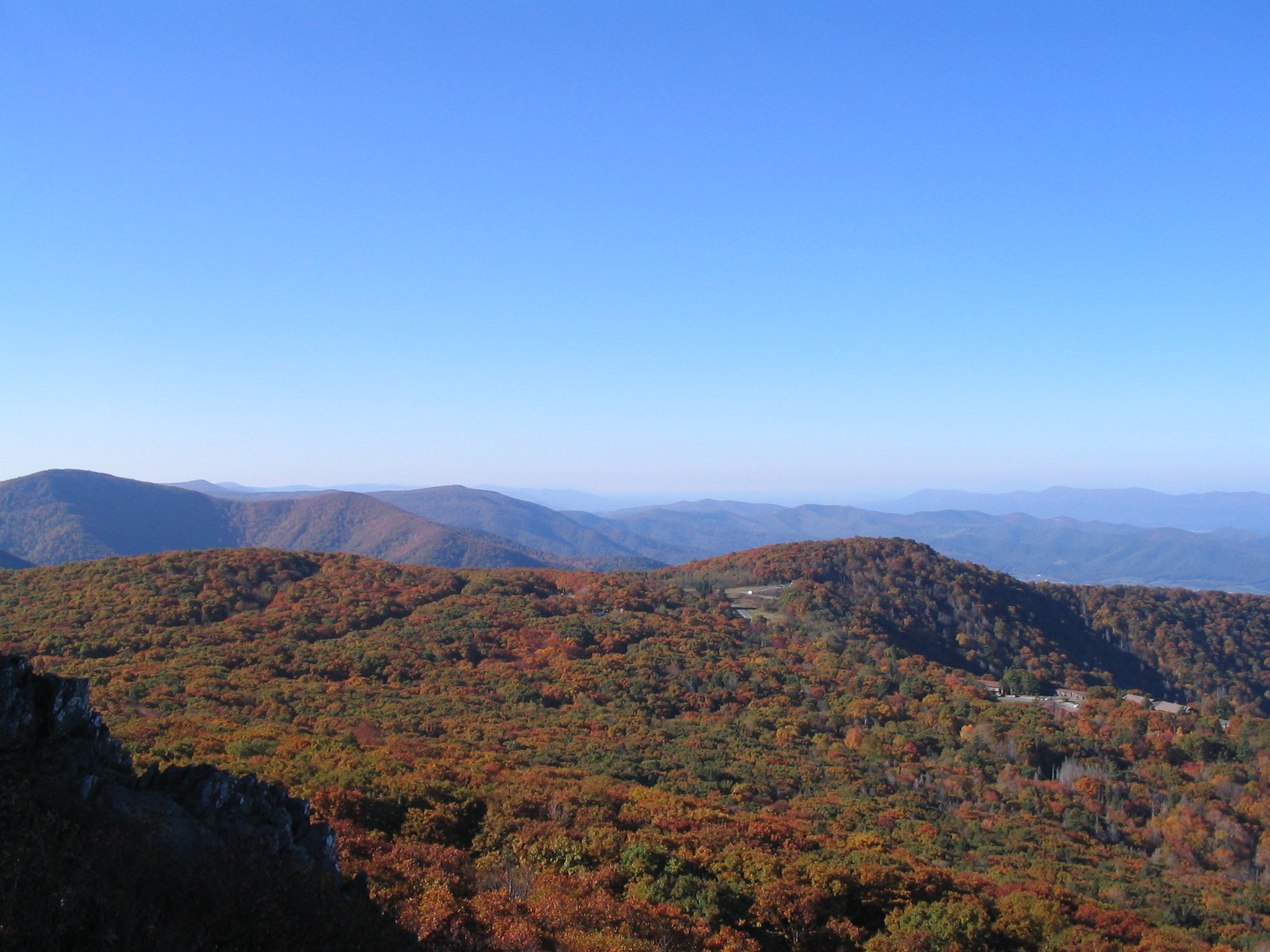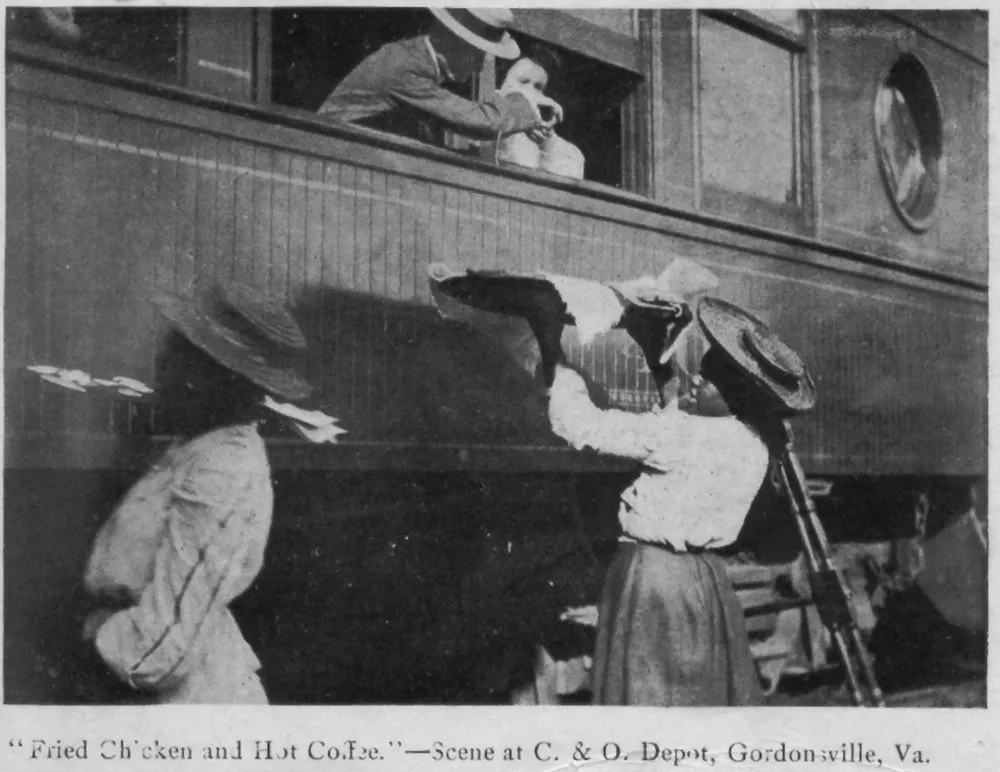
Autumn Equinox (Fall) officially arrived on September 22 this year. Our first taste of Fall actually arrived in August with the passage of the remnants of Hurricane Debby, which changed the overall pattern over the eastern US and ended the summer heat, putting a dent in the drought. This pattern change was a little earlier than usual and helped contribute to some of the early leaf change.
During the growing season leaves are green due to chlorophyll. This pigment is one of the major players in a plant’s development of food throughout the growing season. Once the days begin to get shorter and temperatures cool, the production of chlorophyll is reduced. This reduction in chlorophyll allows other colors to appear in the leaves. The colors we are familiar with are oranges, yellows, reds, and purples.
These colors are related to specific trees and the chemicals naturally found in trees. For example: carotenoid pigments are found in many types of plants and give them orange and yellow hues. Carrots, corn, canaries, and daffodils, as well as egg yolks, rutabagas, buttercups, and bananas all have high levels of carotenoid pigments. Trees that have a lot of carotenoid pigments are mostly hardwood species. Some of them are hickories, ash, maple, yellow poplar, aspen, birch, black cherry, sycamore, cottonwood, sassafras, and alder.
Anthocyanin pigments are responsible for the reds and purples. Cranberries, red apples, blueberries, cherries, strawberries, and plums are loaded with anthocyanin pigments giving them their red or purple color. Trees that have anthocyanin pigments, as the dominant pigment are maples, oaks, sourwood, sweetgum, dogwood, tupelo, black gum, and persimmon. Sometimes these pigments combine and that can produce deeper oranges, fiery reds, and bronzes.
Most people say that drought conditions lessen the brilliance of the fall foliage, but what it really does is bring the colors to peak a little earlier. Without water, the trees become stressed early and chlorophyll production is reduced. This allows the other colors to begin showing up earlier than normal. This could also support leaves dying and falling off the tree earlier than normal. Our summer drought has definitely been a contributor to the early change in leaf colors.
Our peak color for Virginia ranges from early to late October. Higher elevations are colder, and the mountains have been in deeper drought, so the leaves start changing earlier. If we get an early freeze, that would hurt our chances of enjoying the brilliant colors as the freeze will kill the leaves and they will fall off the trees prematurely.
To help you plan your fall foliage trips for the next several weeks, Explorefall.com has set up a great interactive website to help you track Virginia and other states as well.

I grew up an Air Force Brat. Traveled the country and lived in Georgia, Maine, New York, Hawaii and Oklahoma.
I fell in love with the weather in Oklahoma. My father was transferred to Tinker AFB in 1973. While in Temporary housing (a mobile home, which is the standard in Oklahoma) I experienced my first severe thunderstorm with strong winds and hail the size of baseballs. The next day I was in the base library looking up books on weather. The rest is history.
I graduated from the University of Oklahoma in 1983 with a Bachelor’s Degree in Meteorology. The first two years we took Calculus, Differential equations, Physics, Chemistry and Computer science classes with the Engineering Students. It was a grind. My degree is actually from the College of Engineering. The last 2-3 year’s focus was on Meteorology including Observational networks (Satellite, Radar, Surface), Physics, Thermodynamics, Dynamics, Synoptic, Winter Weather, Severe Weather and Climatology.
My first job out of college was with a small forecasting company in Oklahoma City. I was immediately put on TV (OETA) and Radio (WKY) as their broadcast Meteorologist. After two years in broadcasting, I decided to pursue the National Weather Service route and got a position in Toledo, OH as an intern. After a couple of years, I was promoted to a forecaster position at the Cleveland Forecast office. I quickly moved into the Weather Preparedness position and was responsible for all the preparedness activities in the state of Ohio.
In 1992 I decided to pursue other forecast opportunities and moved to the Meteorological Operations Division of the National Meteorological Center in Washington, DC. This group is now called WPC (Weather Prediction Center). There I fine-tuned my forecasting of Synoptic Weather with my focus on Heavy Convective Rainfall and Winter Storms, under the supervision of Dr. Louis Uccellini. He has written several books on East Coast Winter storms. I was promoted to a Senior Branch Forecast position during my tenure at MOD. Part of my job was to teach weather classes at COMET (Cooperative Program for Operational Meteorology, Education, and Training).
In 2012 I was given the opportunity to start up a new weather support group with the FAA (Federal Aviation Administration) in Warrenton, VA at the ATCSSC (Air Traffic Control System Command Center). The ATCSCC is where the FAA identifies solutions to air traffic inefficiencies in the NAS (National Air Space) for the CONUS (Continental United State). Weather impacts are the biggest impact on Aviation with yearly losses over 20 billion dollars. My job was to help lower these inefficiencies/costs by providing weather impact briefings and forecasts in order to keep the air planes moving as safely and efficiently as possible.
I retired in 2022 and now am running Lake Anna Weather, LLC.
Subscribe for Updates
Sponsors
latest articles
Best of Lake Anna: Luxury Koating Applications

Best of Lake Anna: Lake Anna Taphouse

Best of Lake Anna: Teresa ‘Tre’ Carlson, Real Estate Agent

Best of Lake Anna: Jenn Weiland, Cutalong Golf Course

Chronic Wasting Disease Now Confirmed in 18 Virginia Counties
Crispy Roots: a Delicious Fried Chicken Backstory

Autumn Equinox (Fall) officially arrived on September 22 this year. Our first taste of Fall actually arrived in August with the passage of the remnants of Hurricane Debby, which changed the overall pattern over the eastern US and ended the summer heat, putting a dent in the drought. This pattern change was a little earlier than usual and helped contribute to some of the early leaf change.
During the growing season leaves are green due to chlorophyll. This pigment is one of the major players in a plant’s development of food throughout the growing season. Once the days begin to get shorter and temperatures cool, the production of chlorophyll is reduced. This reduction in chlorophyll allows other colors to appear in the leaves. The colors we are familiar with are oranges, yellows, reds, and purples.
These colors are related to specific trees and the chemicals naturally found in trees. For example: carotenoid pigments are found in many types of plants and give them orange and yellow hues. Carrots, corn, canaries, and daffodils, as well as egg yolks, rutabagas, buttercups, and bananas all have high levels of carotenoid pigments. Trees that have a lot of carotenoid pigments are mostly hardwood species. Some of them are hickories, ash, maple, yellow poplar, aspen, birch, black cherry, sycamore, cottonwood, sassafras, and alder.
Anthocyanin pigments are responsible for the reds and purples. Cranberries, red apples, blueberries, cherries, strawberries, and plums are loaded with anthocyanin pigments giving them their red or purple color. Trees that have anthocyanin pigments, as the dominant pigment are maples, oaks, sourwood, sweetgum, dogwood, tupelo, black gum, and persimmon. Sometimes these pigments combine and that can produce deeper oranges, fiery reds, and bronzes.
Most people say that drought conditions lessen the brilliance of the fall foliage, but what it really does is bring the colors to peak a little earlier. Without water, the trees become stressed early and chlorophyll production is reduced. This allows the other colors to begin showing up earlier than normal. This could also support leaves dying and falling off the tree earlier than normal. Our summer drought has definitely been a contributor to the early change in leaf colors.
Our peak color for Virginia ranges from early to late October. Higher elevations are colder, and the mountains have been in deeper drought, so the leaves start changing earlier. If we get an early freeze, that would hurt our chances of enjoying the brilliant colors as the freeze will kill the leaves and they will fall off the trees prematurely.
To help you plan your fall foliage trips for the next several weeks, Explorefall.com has set up a great interactive website to help you track Virginia and other states as well.

I grew up an Air Force Brat. Traveled the country and lived in Georgia, Maine, New York, Hawaii and Oklahoma.
I fell in love with the weather in Oklahoma. My father was transferred to Tinker AFB in 1973. While in Temporary housing (a mobile home, which is the standard in Oklahoma) I experienced my first severe thunderstorm with strong winds and hail the size of baseballs. The next day I was in the base library looking up books on weather. The rest is history.
I graduated from the University of Oklahoma in 1983 with a Bachelor’s Degree in Meteorology. The first two years we took Calculus, Differential equations, Physics, Chemistry and Computer science classes with the Engineering Students. It was a grind. My degree is actually from the College of Engineering. The last 2-3 year’s focus was on Meteorology including Observational networks (Satellite, Radar, Surface), Physics, Thermodynamics, Dynamics, Synoptic, Winter Weather, Severe Weather and Climatology.
My first job out of college was with a small forecasting company in Oklahoma City. I was immediately put on TV (OETA) and Radio (WKY) as their broadcast Meteorologist. After two years in broadcasting, I decided to pursue the National Weather Service route and got a position in Toledo, OH as an intern. After a couple of years, I was promoted to a forecaster position at the Cleveland Forecast office. I quickly moved into the Weather Preparedness position and was responsible for all the preparedness activities in the state of Ohio.
In 1992 I decided to pursue other forecast opportunities and moved to the Meteorological Operations Division of the National Meteorological Center in Washington, DC. This group is now called WPC (Weather Prediction Center). There I fine-tuned my forecasting of Synoptic Weather with my focus on Heavy Convective Rainfall and Winter Storms, under the supervision of Dr. Louis Uccellini. He has written several books on East Coast Winter storms. I was promoted to a Senior Branch Forecast position during my tenure at MOD. Part of my job was to teach weather classes at COMET (Cooperative Program for Operational Meteorology, Education, and Training).
In 2012 I was given the opportunity to start up a new weather support group with the FAA (Federal Aviation Administration) in Warrenton, VA at the ATCSSC (Air Traffic Control System Command Center). The ATCSCC is where the FAA identifies solutions to air traffic inefficiencies in the NAS (National Air Space) for the CONUS (Continental United State). Weather impacts are the biggest impact on Aviation with yearly losses over 20 billion dollars. My job was to help lower these inefficiencies/costs by providing weather impact briefings and forecasts in order to keep the air planes moving as safely and efficiently as possible.
I retired in 2022 and now am running Lake Anna Weather, LLC.
Subscribe for Updates
Sponsors
latest articles
Best of Lake Anna: Luxury Koating Applications

Best of Lake Anna: Lake Anna Taphouse

Best of Lake Anna: Teresa ‘Tre’ Carlson, Real Estate Agent

Best of Lake Anna: Jenn Weiland, Cutalong Golf Course

Chronic Wasting Disease Now Confirmed in 18 Virginia Counties
Crispy Roots: a Delicious Fried Chicken Backstory

![Featured image for “[Spotsylvania] New Speed Enforcement in School Zones”](https://lakeanna.online/wp-content/uploads/2025/09/Blog-pic-scaled.jpg)
[Spotsylvania] New Speed Enforcement in School Zones
Article By Jen Bailey

Belmont Ruritan Clubs Award $26,000 in Scholarships to Local Seniors
Article By Jen Bailey









